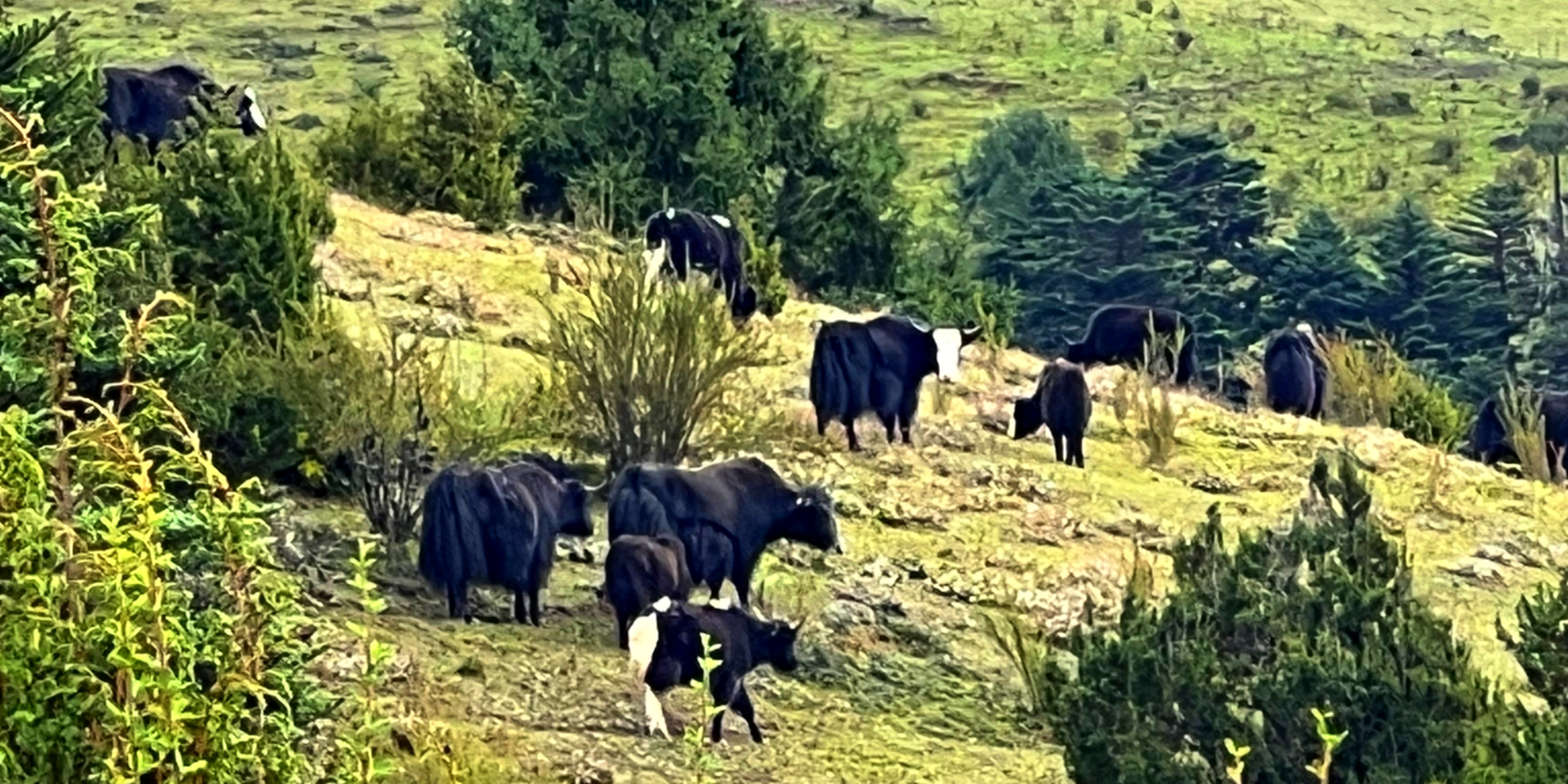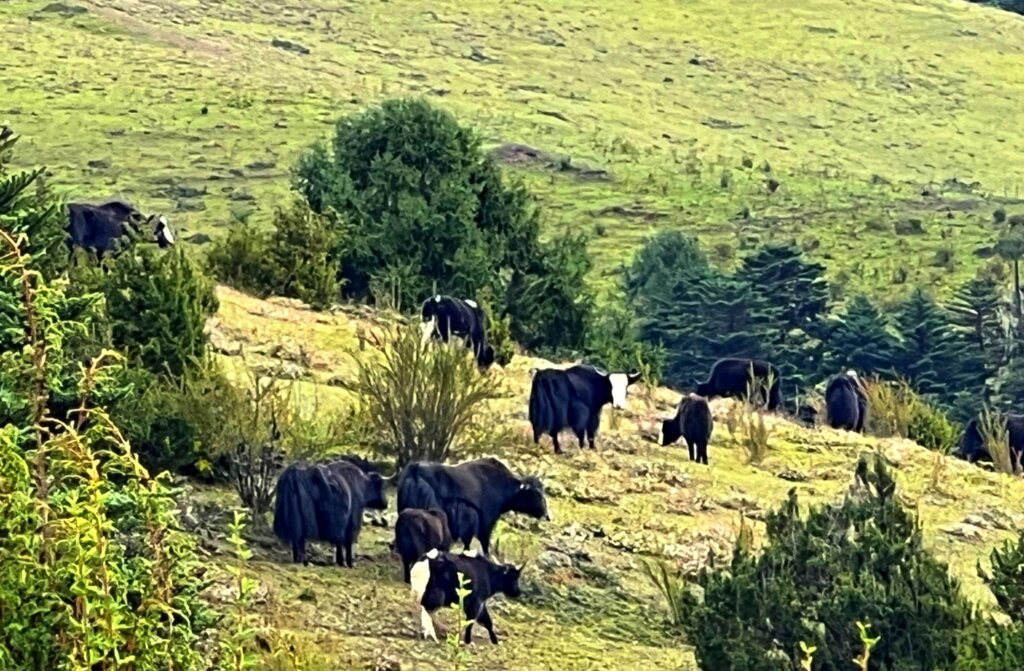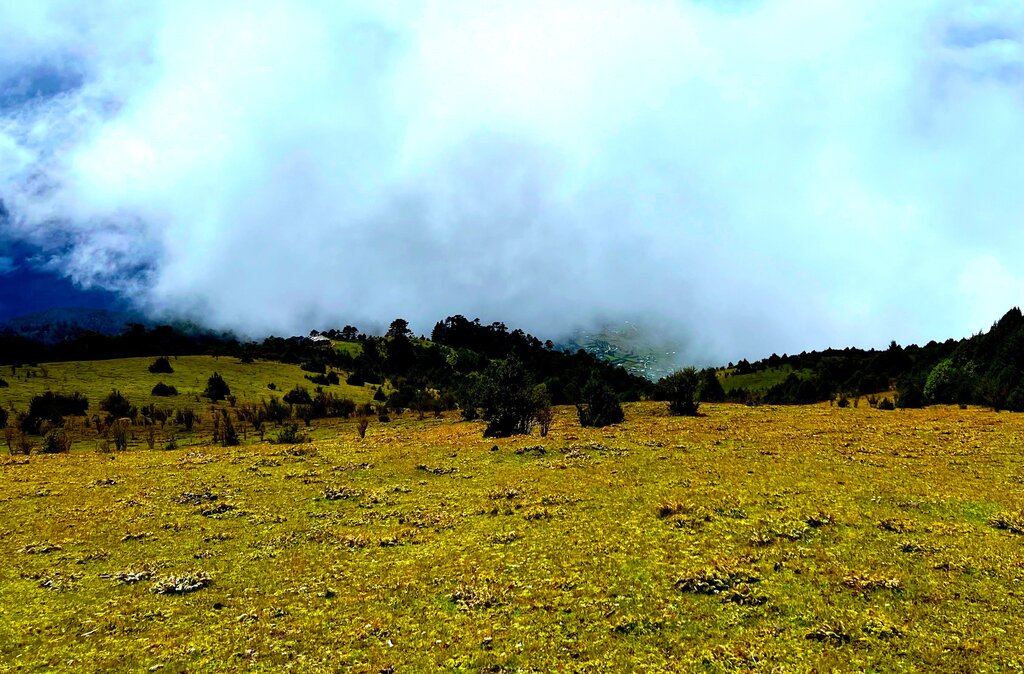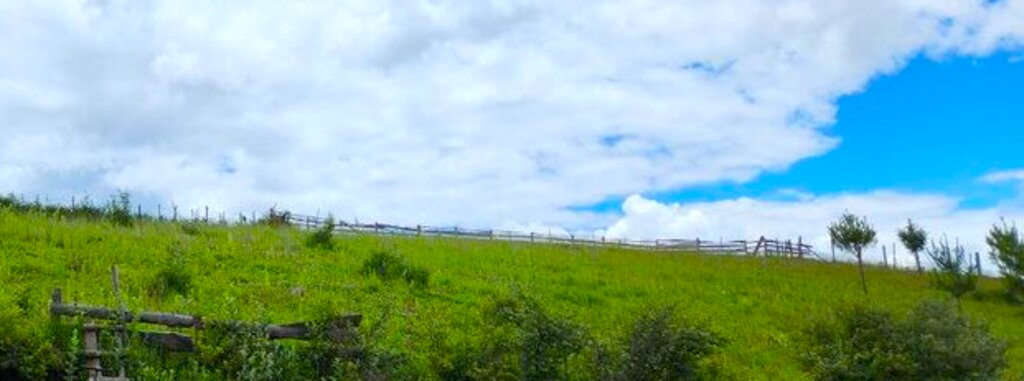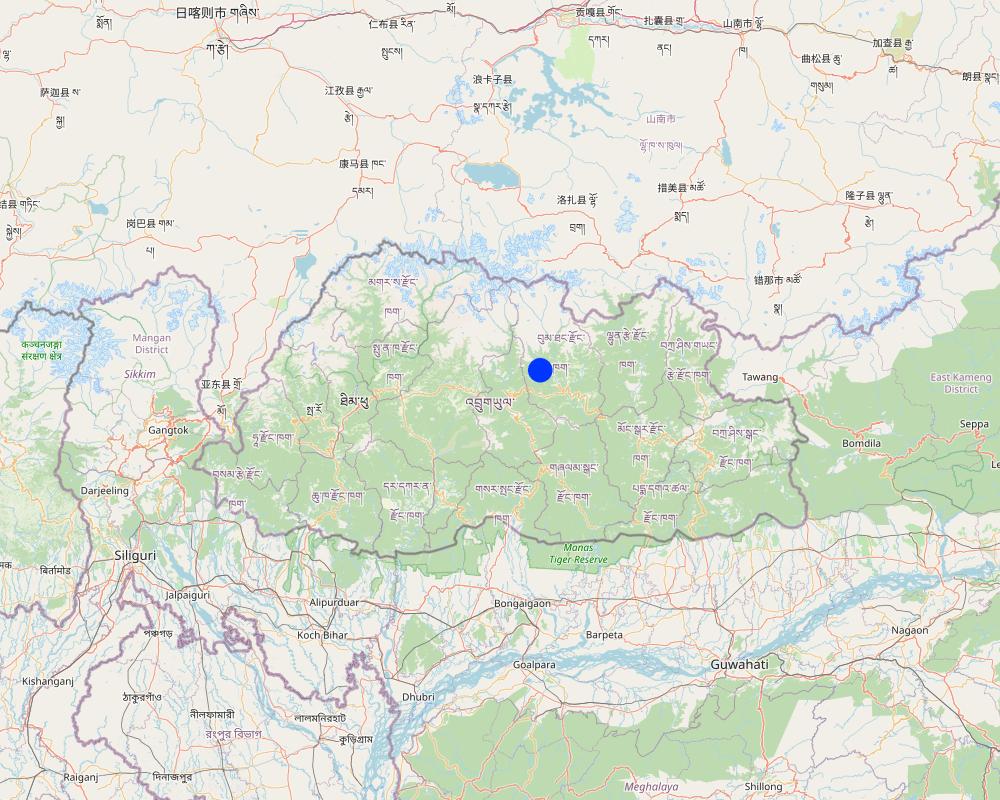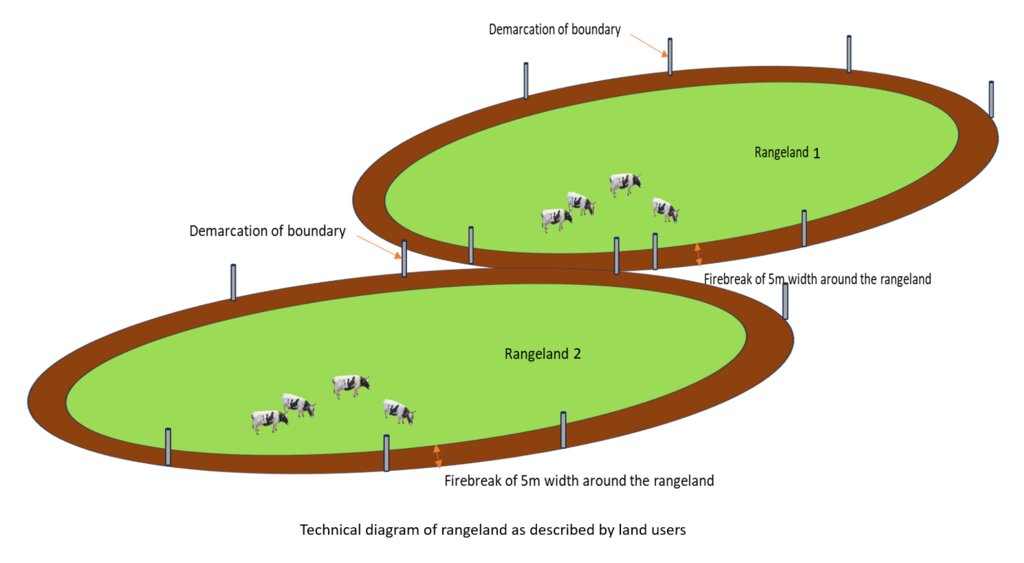Managed Burning of Rangeland [Bhoutan]
- Création :
- Mise à jour :
- Compilateur : ONGPO LEPCHA
- Rédacteur : chenga Tshering
- Examinateurs : William Critchley, Rima Mekdaschi Studer, Joana Eichenberger
Tshaezin Gi Thogley Meytang Tey Tsadrok Zinchong (ཚད་འཛིན་གྱི་ཐོག་ལས་མེ་བཏང་སྟེ་ཙྭ་འབྲོག་འཛིན་སྐྱོང་།)
technologies_6855 - Bhoutan
Voir les sections
Développer tout Réduire tout1. Informations générales
1.2 Coordonnées des personnes-ressources et des institutions impliquées dans l'évaluation et la documentation de la Technologie
Personne(s)-ressource(s) clé(s)
exploitant des terres:
Phurba
Dhur community
Bhoutan
exploitant des terres:
Phuntsho Kelzang
Dhur community
Bhoutan
Nom du projet qui a facilité la documentation/ l'évaluation de la Technologie (si pertinent)
Strengthening national-level institutional and professional capacities of country Parties towards enhanced UNCCD monitoring and reporting – GEF 7 EA Umbrella II (GEF 7 UNCCD Enabling Activities_Umbrella II)Nom du ou des institutions qui ont facilité la documentation/ l'évaluation de la Technologie (si pertinent)
National Soil Services Centre, Department of Agriculture, Ministry of Agriculture & Livestock (NSSC) - Bhoutan1.3 Conditions relatives à l'utilisation par WOCAT des données documentées
Le compilateur et la(les) personne(s) ressource(s) acceptent les conditions relatives à l'utilisation par WOCAT des données documentées:
Oui
1.4 Déclaration sur la durabilité de la Technologie décrite
Est-ce que la Technologie décrite ici pose problème par rapport à la dégradation des terres, de telle sorte qu'elle ne peut pas être déclarée comme étant une technologie de gestion durable des terres?
Non
Commentaires:
While this practice may be criticised on the basis of reducing biodiversity and leading to some GHG losses, it is an important land management practice that has certain specific benefits including making the land more productive.
2. Description de la Technologie de GDT
2.1 Courte description de la Technologie
Définition de la Technologie:
Burning of rangeland (“tsamdro”) is a traditional management practice adopted by highlanders to control unpalatable grass and shrub species. This helps them produce adequate fodder for their yaks, cattle, horses, and sheep by creating a favorable environment for palatable grasses.
2.2 Description détaillée de la Technologie
Description:
The practice of burning rangeland (“tsamdro”) is a longstanding tradition among highlanders, whose livelihoods depend on livestock including yaks, cattle, horses and sheep. It is mainly practiced by transhumant communities or individuals who rely on livestock for their livelihoods. They follow a migratory livestock husbandry system that takes them from the highlands to the lowlands dependent on the availability of fodder resources, while simultaneously avoiding the extremes of climate. In the past, rangeland was allocated to individuals, communities, or religious bodies through payment for a minimal annual grazing permit, granting grazing rights. When pasture was scarce, controlled fires were intentionally set in specific areas to rejuvenate the rangeland with fresh grass and control unpalatable grasses and shrubs. For instance, the transhumant nomadic communities of Dhur village, Choekhor Gewog, in Bumthang have adopted the practice of burning rangeland. This practice is implemented during the winter months, dependent on weather, vegetation status, and wind patterns. Rooted in traditional knowledge and cultural practices, the practice is slowly diminishing nowadays due to environmental concerns and labour shortages as young nomads migrate - seeking better employment in towns.
The technique serves multiple purposes. These include promoting the growth of fresh and palatable pasture rich in protein, increasing plant diversity, adding nutrients to the soil through ash, and reducing dead plant material that inhibits new plant growth. Additionally, rangeland burning contributes to the control of livestock pests, especially ticks and flies. While rangeland burning is a straightforward process, it requires careful planning of time and location, creation of fire breaks to prevent uncontrollable spread, and leaving the land fallow for 2 to 3 years after burning to encourage grass growth.
Land users appreciate the technology for reducing their workload in collecting wild fodder grasses, enhancing visibility by removing trees and shrubs, and reducing the risk of predators. However, risks include the potential for uncontrolled fires if not properly managed and harm to the ecosystem and biodiversity in and around the pastureland. Burning also contributes to the loss of carbon dioxide (a greenhouse gas) to the atmosphere.
2.3 Photos de la Technologie
2.5 Pays/ région/ lieux où la Technologie a été appliquée et qui sont couverts par cette évaluation
Pays:
Bhoutan
Région/ Etat/ Province:
Bumthang Dzongkhag (District)
Autres spécifications du lieu:
Dhur village, Choekhor Gewog (Block)
Spécifiez la diffusion de la Technologie:
- répartie uniformément sur une zone
S'il n'existe pas d'informations exactes sur la superficie, indiquez les limites approximatives de la zone couverte:
- 0,1-1 km2
Est-ce que les sites dans lesquels la Technologie est appliquée sont situés dans des zones protégées en permanence?
Non
Commentaires:
The total area of rangeland owned was 70 acres (from the two individual who the enumerators interviewed)
Map
×2.6 Date de mise en œuvre de la Technologie
Si l'année précise est inconnue, indiquez la date approximative: :
- il y a plus de 50 ans (technologie traditionnelle)
2.7 Introduction de la Technologie
Spécifiez comment la Technologie a été introduite: :
- dans le cadre d'un système traditionnel (> 50 ans)
Commentaires (type de projet, etc.) :
Traditional practice of burning rangeland was adopted by the transhumant nomadic community of Dhur village called the Bjobs since time immemorial.
3. Classification de la Technologie de GDT
3.1 Principal(aux) objectif(s) de la Technologie
- améliorer la production
3.2 Type(s) actuel(s) d'utilisation des terres, là où la Technologie est appliquée
Les divers types d'utilisation des terres au sein du même unité de terrain: :
Oui
Précisez l'utilisation mixte des terres (cultures/ pâturages/ arbres):
- Sylvo-pastoralisme

Pâturages
Pâturage extensif:
- Nomadisme
- Pasture grass is natural grown and livestock are allowed to graze on it
- Yak
Est-ce que la gestion intégrée cultures-élevage est pratiquée?
Non
Produits et services:
- viande
- lait
- peaux/ cuirs
Espèces:
bétail - laitier
Nombre:
50
Espèces:
bétail - laitier
Nombre:
55

Forêts/ bois
- Forêts (semi-)naturelles/ bois
Forêts (semi-)naturelles/ terres boisées: précisez le mode de gestion:
- Enlèvement du bois mort/ bois de taille
Type de forêts (semi)-naturelles:
- végétation naturelle des systèmes de montagne tempérés
- Pine, Chirpine, Fir and Cypress
Est-ce que les espèces d’arbres précisées ci-dessus sont des espèces d'arbre arbres à feuilles caduques ou à feuilles persistantes ?
- forêts à feuillage persistant
Produits et services:
- Conservation/ protection de la nature
3.3 Est-ce que l’utilisation des terres a changé en raison de la mise en œuvre de la Technologie ?
Est-ce que l’utilisation des terres a changé en raison de la mise en œuvre de la Technologie ?
- Non (Passez à la question 3.4)
3.4 Approvisionnement en eau
Approvisionnement en eau des terres sur lesquelles est appliquée la Technologie:
- pluvial
Commentaires:
There are water sources in their summer pasture lands; however, for the growth of the pasture grass, water supply is mostly dependent on rain.
3.5 Groupe de GDT auquel appartient la Technologie
- pastoralisme et gestion des pâturages
3.6 Mesures de GDT constituant la Technologie

modes de gestion
- M5: Contrôle/ changement de la composition des espèces
Commentaires:
The main SLM measure includes the burning of rangeland to regenerate palatable grass species. In the process of burning invasive species are killed, and the desired clearing of weeds is achieved finally resulting in an environment with fresh grasses for livestock.
3.7 Principaux types de dégradation des terres traités par la Technologie

autre
Précisez:
Revitalise and regenerate growth of palatable grass species to be used for livestock grazing
Commentaires:
This technology do not address land degradation issue .
3.8 Prévention, réduction de la dégradation ou réhabilitation des terres dégradées
Spécifiez l'objectif de la Technologie au regard de la dégradation des terres:
- non applicable
Commentaires:
It is used to regenerate and revitalise growth of palatable grass species.
4. Spécifications techniques, activités, intrants et coûts de mise en œuvre
4.1 Dessin technique de la Technologie
Spécifications techniques (associées au dessin technique):
Firebreak of 5 m are kept to control the burning
Auteur:
Ongpo Lepcha
Date:
16/02/2024
4.2 Informations générales sur le calcul des intrants et des coûts
Spécifiez la manière dont les coûts et les intrants ont été calculés:
- par superficie de la Technologie
Indiquez la taille et l'unité de surface:
1 acres
Si vous utilisez une unité de superficie locale, indiquez le facteur de conversion vers un hectare (p.ex. 1 ha = 2.47 acres): 1 ha = :
0.4 hectare
autre/ monnaie nationale (précisez):
Bhutanese Ngultrum
Indiquez le taux de change des USD en devise locale, le cas échéant (p.ex. 1 USD = 79.9 réal brésilien): 1 USD = :
82,08
Indiquez le coût salarial moyen de la main d'œuvre par jour:
1200
4.3 Activités de mise en place/ d'établissement
| Activité | Calendrier des activités (saisonnier) | |
|---|---|---|
| 1. | Creating fire break around the pasture land | During the winter season |
| 2. | Burning of the pasture land | During the winter season |
| 3. | After burning the land is left fallow for the pasture land to establish | Kept fallow for the next 2 to 3 years |
4.4 Coûts et intrants nécessaires à la mise en place
| Spécifiez les intrants | Unité | Quantité | Coûts par unité | Coût total par intrant | % des coût supporté par les exploitants des terres | |
|---|---|---|---|---|---|---|
| Main d'œuvre | Labours | person-days | 9,0 | 1200,0 | 10800,0 | 98,0 |
| Equipements | grass cutter | No | 1,0 | 15000,0 | 15000,0 | |
| Equipements | Pipe | Bundle | 1,0 | 3000,0 | 3000,0 | |
| Equipements | Spade | No | 3,0 | 500,0 | 1500,0 | |
| Coût total de mise en place de la Technologie | 30300,0 | |||||
| Coût total de mise en place de la Technologie en dollars américains (USD) | 369,15 | |||||
Commentaires:
The cost for the pasture burning is very minimal and even the labours normally are from their own household.
4.5 Activités d'entretien/ récurrentes
| Activité | Calendrier/ fréquence | |
|---|---|---|
| 1. | Land is left fallow | For 2 to 3 years |
Commentaires:
The rangeland after burning is left fallow for the next 2 to 3 years. During that time, the land user would graze their yaks in other pasture land.
4.6 Coûts et intrants nécessaires aux activités d'entretien/ récurrentes (par an)
Commentaires:
Expenditure not incurred for the maintenance of the technology.
4.7 Facteurs les plus importants affectant les coûts
Décrivez les facteurs les plus importants affectant les coûts :
Labour cost
5. Environnement naturel et humain
5.1 Climat
Précipitations annuelles
- < 250 mm
- 251-500 mm
- 501-750 mm
- 751-1000 mm
- 1001-1500 mm
- 1501-2000 mm
- 2001-3000 mm
- 3001-4000 mm
- > 4000 mm
Spécifications/ commentaires sur les précipitations:
The data was used from the National Center for Hydrology and Meteorology from the nearest weather station.
Indiquez le nom de la station météorologique de référence considérée:
https://www.nchm.gov.bt/home/pageMenu/906
Zone agro-climatique
- semi-aride
Cool temperate zone
5.2 Topographie
Pentes moyennes:
- plat (0-2 %)
- faible (3-5%)
- modéré (6-10%)
- onduleux (11-15%)
- vallonné (16-30%)
- raide (31-60%)
- très raide (>60%)
Reliefs:
- plateaux/ plaines
- crêtes
- flancs/ pentes de montagne
- flancs/ pentes de colline
- piémonts/ glacis (bas de pente)
- fonds de vallée/bas-fonds
Zones altitudinales:
- 0-100 m
- 101-500 m
- 501-1000 m
- 1001-1500 m
- 1501-2000 m
- 2001-2500 m
- 2501-3000 m
- 3001-4000 m
- > 4000 m
Indiquez si la Technologie est spécifiquement appliquée dans des:
- non pertinent
5.3 Sols
Profondeur moyenne du sol:
- très superficiel (0-20 cm)
- superficiel (21-50 cm)
- modérément profond (51-80 cm)
- profond (81-120 cm)
- très profond (>120 cm)
Texture du sol (de la couche arable):
- moyen (limoneux)
Matière organique de la couche arable:
- abondant (>3%)
5.4 Disponibilité et qualité de l'eau
Disponibilité de l’eau de surface:
bonne
Qualité de l’eau (non traitée):
eau potable
La qualité de l'eau fait référence à:
eaux de surface
La salinité de l'eau est-elle un problème? :
Non
La zone est-elle inondée?
Non
5.5 Biodiversité
Diversité des espèces:
- faible
Diversité des habitats:
- faible
Commentaires et précisions supplémentaires sur la biodiversité:
Since, only grasses are grown in the land, the species and habitat diversity is very low. Other factors that determine low diversity could be due to low temperature.
5.6 Caractéristiques des exploitants des terres appliquant la Technologie
Sédentaire ou nomade:
- Nomade
Orientation du système de production:
- exploitation mixte (de subsistance/ commerciale)
Revenus hors exploitation:
- > 50% de tous les revenus
Niveau relatif de richesse:
- riche
Individus ou groupes:
- individu/ ménage
Niveau de mécanisation:
- travail manuel
Genre:
- hommes
Age des exploitants des terres:
- personnes âgées
Indiquez toute autre caractéristique pertinente des exploitants des terres:
The land users were currently retired and had their sons and daughters to take care of their yaks.
5.7 Superficie moyenne des terres utilisées par les exploitants des terres appliquant la Technologie
- < 0,5 ha
- 0,5-1 ha
- 1-2 ha
- 2-5 ha
- 5-15 ha
- 15-50 ha
- 50-100 ha
- 100-500 ha
- 500-1 000 ha
- 1 000-10 000 ha
- > 10 000 ha
Cette superficie est-elle considérée comme de petite, moyenne ou grande dimension (en se référant au contexte local)?
- grande dimension
Commentaires:
One of the interviewees had 50 acres of pasture land, while the other had 20 acres of pasture land.
5.8 Propriété foncière, droits d’utilisation des terres et de l'eau
Propriété foncière:
- individu, avec titre de propriété
Droits d’utilisation des terres:
- individuel
Droits d’utilisation de l’eau:
- accès libre (non organisé)
Est-ce que les droits d'utilisation des terres sont fondés sur un système juridique traditionnel?
Oui
Précisez:
The traditional legal system in our country is as per the land act and rules and regulations which dictate the land use in the country.
5.9 Accès aux services et aux infrastructures
santé:
- pauvre
- modéré
- bonne
éducation:
- pauvre
- modéré
- bonne
assistance technique:
- pauvre
- modéré
- bonne
emploi (par ex. hors exploitation):
- pauvre
- modéré
- bonne
marchés:
- pauvre
- modéré
- bonne
énergie:
- pauvre
- modéré
- bonne
routes et transports:
- pauvre
- modéré
- bonne
eau potable et assainissement:
- pauvre
- modéré
- bonne
services financiers:
- pauvre
- modéré
- bonne
Commentaires:
Access to these services and infrastructure were based on their winter home, during the summer they would travel to the more higher altitudes where none of these services are available except for drinking water.
6. Impacts et conclusions
6.1 Impacts sur site que la Technologie a montrés
Impacts socio-économiques
Production
production fourragère
Commentaires/ spécifiez:
The land users shared that fodder production is relatively higher when practicing rangeland burning.
qualité des fourrages
Commentaires/ spécifiez:
When comparing cut grass and grass in burned rangeland, the land users prefer the grass in the burned rangeland.
production animale
Commentaires/ spécifiez:
According to the land users, milk yield is better and higher from cattle fed on grasses from rangeland, which was burnt previously.
risque d'échec de la production
Commentaires/ spécifiez:
Land user also shared that burning rangeland provides enough food for their livestock which is sufficient throughout the year. This reduces the risk of production due to a shortage of grasses/feed.
Revenus et coûts
revenus agricoles
Commentaires/ spécifiez:
Farm income is higher when compared to dairy supplemented with commercial feed in the winter. In addition, the establishment cost and implementation cost is also very low.
charge de travail
Commentaires/ spécifiez:
According to the nomads, burning rangeland is easier and requires less amount of energy for establishment.
Impacts socioculturels
connaissances sur la GDT/ dégradation des terres
Commentaires/ spécifiez:
Land users observed healthy grasses growing after burning rangeland. This indicated that burning also adds to soil fertility.
Impacts écologiques
Biodiversité: végétale, animale
Couverture végétale
Commentaires/ spécifiez:
Vegetation cover is reduced because of this technology. This is because shrubs and trees are intentionally removed from the rangeland.
diversité végétale
Commentaires/ spécifiez:
Plant diversity is also very minimal since tree saplings and shrubs are burned leaving only the pasture grass to grow on the land
diversité des habitats
Commentaires/ spécifiez:
Only grass is maintained as part of the technology. Habitat diversity is very low as trees and shrubs which also serve as habitats for many insects and arthropods are removed from rangeland.
contrôle des animaux nuisibles/ maladies
Commentaires/ spécifiez:
It is reported in the literature that rangeland burning can reduce pest like tick and flies.
6.2 Impacts hors site que la Technologie a montrés
impact des gaz à effet de serre
Commentaires/ spécifiez:
Burning of the rangeland leads to the production of several greenhouse gases, inevitably.
6.3 Exposition et sensibilité de la Technologie aux changements progressifs et aux évènements extrêmes/catastrophes liés au climat (telles que perçues par les exploitants des terres)
Changements climatiques progressifs
Changements climatiques progressifs
| Saison | Augmentation ou diminution | Comment la Technologie fait-elle face à cela? | |
|---|---|---|---|
| températures annuelles | augmente | bien | |
| précipitations annuelles | décroît | bien |
Extrêmes climatiques (catastrophes)
Catastrophes météorologiques
| Comment la Technologie fait-elle face à cela? | |
|---|---|
| pluie torrentielle locale | bien |
| orage local | très bien |
| averse de grêle locale | bien |
| tempête de neige locale | bien |
| tempête de vent locale | très bien |
Catastrophes climatiques
| Comment la Technologie fait-elle face à cela? | |
|---|---|
| vague de froid | bien |
| sécheresse | bien |
| feu de forêt | pas bien |
Catastrophes hydrologiques
| Comment la Technologie fait-elle face à cela? | |
|---|---|
| glissement de terrain | bien |
6.4 Analyse coûts-bénéfices
Quels sont les bénéfices comparativement aux coûts de mise en place (du point de vue des exploitants des terres)?
Rentabilité à court terme:
très positive
Rentabilité à long terme:
très positive
Quels sont les bénéfices comparativement aux coûts d'entretien récurrents (du point de vue des exploitants des terres)?
Rentabilité à court terme:
très positive
Rentabilité à long terme:
très positive
Commentaires:
Since minimal cost goes into implementing the technology, the income earned from it is high. Further, the land users also earn income from cordyceps, therefore, off farm income is very high than from dairy produced from the cattles.
6.5 Adoption de la Technologie
- 11-50%
Si disponible, quantifiez (nombre de ménages et/ou superficie couverte):
17 households from a total of 105 household in the village are land users and practice rangeland burning.
De tous ceux qui ont adopté la Technologie, combien d'entre eux l'ont fait spontanément, à savoir sans recevoir aucune incitation matérielle, ou aucune rémunération? :
- 91-100%
Commentaires:
Burning of the rangeland has been practiced by all the land users for a very long period of time.
6.6 Adaptation
La Technologie a-t-elle été récemment modifiée pour s'adapter à l'évolution des conditions?
Non
6.7 Points forts/ avantages/ possibilités de la Technologie
| Points forts/ avantages/ possibilités du point de vue de l'exploitant des terres |
|---|
| Feed security for livestock: Land users have high-quality grasses in enough quantity to feed his/her cattle for the seasons. |
| The land is revitalized for better growth of the pasture grass: fresh and healthy grasses growing after the burning of rangeland are rich in protein and enhanced digestibility |
| Less workload: Implementation of this technology is easy and land users have enough time to di off-farm activities. |
| Points forts/ avantages/ possibilités du point de vue du compilateur ou d'une autre personne ressource clé |
|---|
| Rangeland burning helps control the spread of woody plants and invasive species. |
| Rangeland burning has cultural significance and is deeply rooted in traditional knowledge and practices. |
6.8 Faiblesses/ inconvénients/ risques de la Technologie et moyens de les surmonter
| Faiblesses/ inconvénients/ risques du point de vue de l’exploitant des terres | Comment peuvent-ils être surmontés? |
|---|---|
| Can lead to forest fire | Land users should create fire break to prevent the fire from becoming uncontrollable |
| Affect ecosystem and biodiversity in and around the pasture land | Using better varieties of pasture grass. |
| Faiblesses/ inconvénients/ risques du point de vue du compilateur ou d'une autre personne ressource clé | Comment peuvent-ils être surmontés? |
|---|---|
| Intense fires or repeated burning in the same areas can lead to increased soil erosion. | Implementing proper rotational burning practices, where different areas of the rangeland are burned in a planned sequence. |
| Rangeland burning can produce smoke and affect air quality and add carbon dioxide (green house gases) to the atmosphere. | Burns should be carried out under favorable weather conditions, taking into account wind direction and dispersion patterns. |
7. Références et liens
7.1 Méthodes/ sources d'information
- visites de terrain, enquêtes sur le terrain
One household as representative of other household involved.
- interviews/entretiens avec les exploitants des terres
Two individuals
Quand les données ont-elles été compilées (sur le terrain)?
17/07/2023
7.2 Références des publications disponibles
Titre, auteur, année, ISBN:
Mapiye, C., Mwale, M., Chikumba, N. & Chimonyo, M. (2008). Fire as a Rangeland Management Tool in the Savannas of Southern Africa. Tropical and Subtropical Agroecosystems, 8, 115-124.
Disponible à partir d'où? Coût?
https://www.redalyc.org/pdf/939/93980201.pdf
Titre, auteur, année, ISBN:
Sabiiti, E. N., Wamara, J. B., Ogen-Odoi, A. A. & Wein, R. W. (1992). The Role of Fire in Pasture and Rangeland Management. Nomadic Peoples, 21, 107-110.
Disponible à partir d'où? Coût?
https://www.jstor.org/stable/43123378
7.3 Liens vers les informations pertinentes en ligne
Titre/ description:
Management Strategies for Rangeland and Introduced Pastures
URL:
https://extension.okstate.edu/fact-sheets/management-strategies-for-rangeland-and-introduced-pastures.html
Titre/ description:
Fire as a Tool in Land Management
URL:
https://rangelandsgateway.org/topics/rangeland-ecology/fire-tool-land-management
7.4 Observations d'ordre général
Some questions in the questionnaire were not related to Bhutanese context. So we left out those question without any response.
Liens et modules
Développer tout Réduire toutLiens
Aucun lien
Modules
Aucun module trouvé


